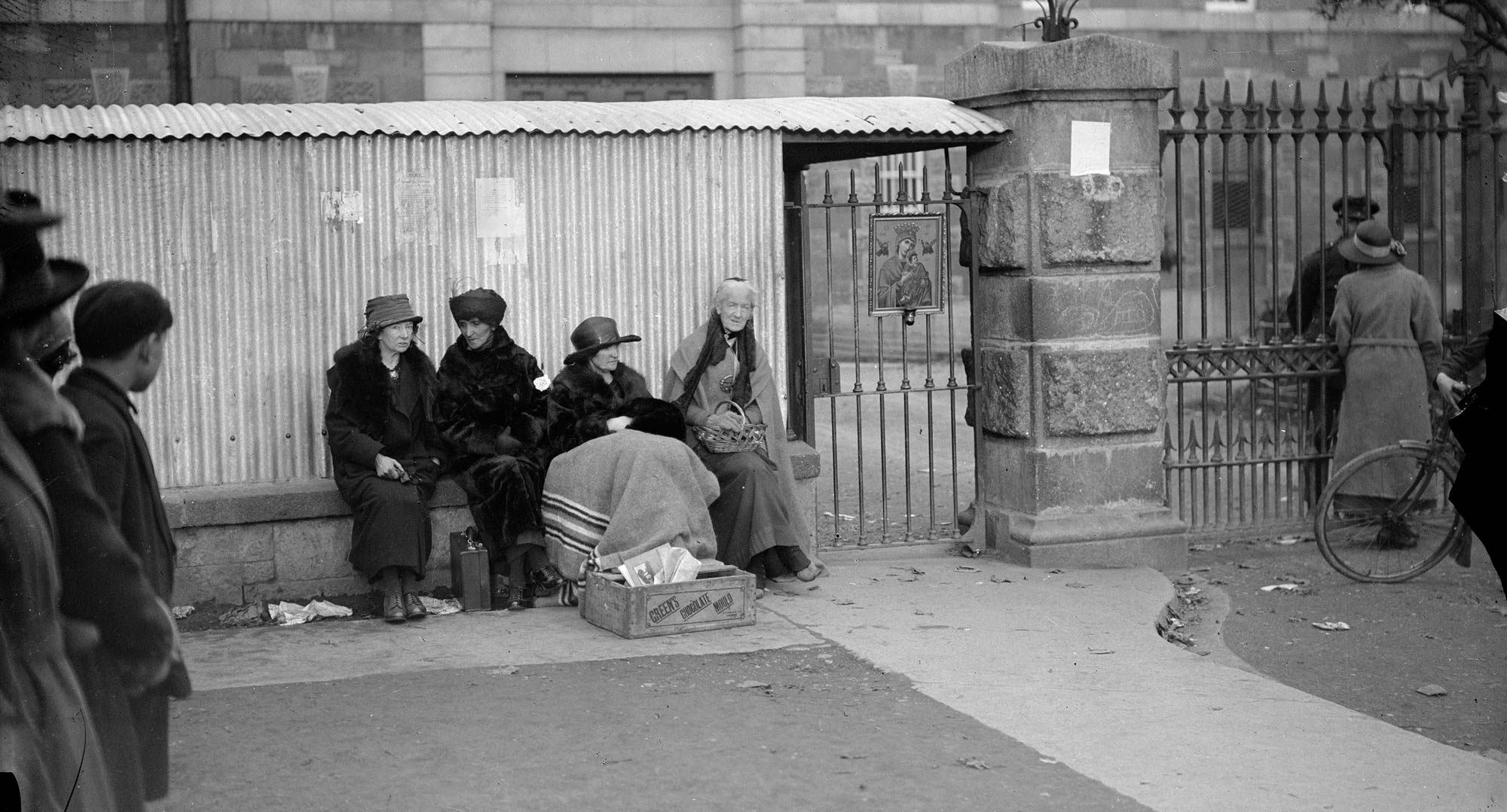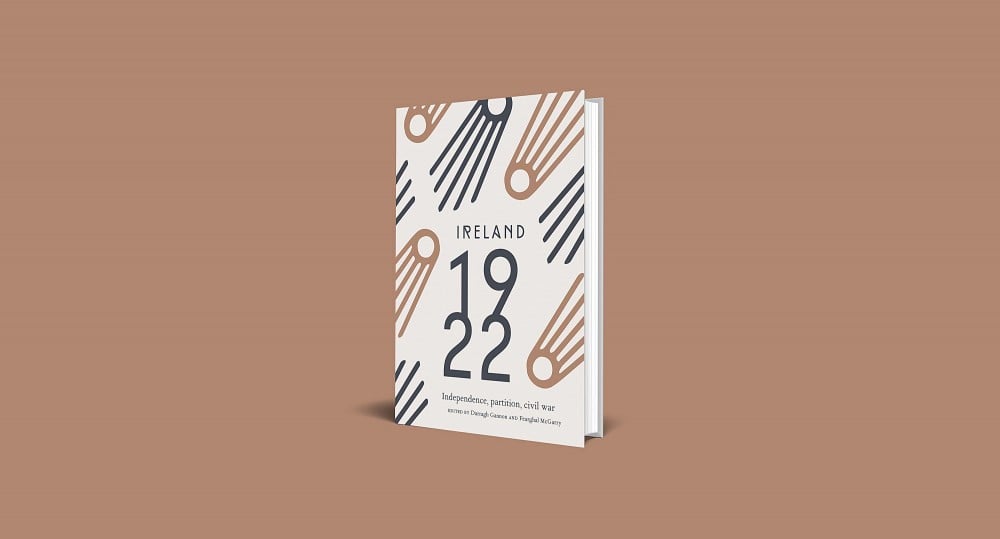4 November 1922: Mary MacSwiney’s Hunger Strike
The Sanctity of Oaths
By Diarmaid Ferriter
The imprisonment and three-week hunger strike of Mary MacSwiney, which began in Dublin on 4 November 1922, generated national and international controversy. The episode illuminated key themes relating to the civil war, including the political divide prompted by the Anglo-Irish Treaty, the strategies and rhetoric adopted by both sides, gender, religion, emotion, and the internationalising of the Irish question. Revisiting the MacSwiney hunger strike of 1922 offers an opportunity to examine the extent of distortion, caricature and the fashioning of contentious and partisan narratives arising from that most controversial of years.
MacSwiney, who first came to prominence as a suffragette, was elected to the Dáil for Cork city as well as being a member of Cumann na mBan’s national executive. She was one of six female Sinn Féin TDs in the Dáil in 1921, all of whom voted against the Treaty. A teacher, experienced public orator and eminently quotable debater, she spoke for two hours and forty minutes during the Treaty debate; the longest contribution of anyone. Alongside her harsh words for supporters of the Treaty on account of their ‘gross betrayal’ of the Republic, another weapon in her armoury was the ghost of her brother Terence, who had died in Brixton prison in 1920 after a 74-day hunger strike. She was the keeper of his flame and her name carried weight because of that as she embarked on an extensive seven-month tour of the US in 1921, incorporating 58 cities and over 300 meetings.
Her resort to her own hunger strike in Mountjoy Prison in November 1922 brought her further prominence and notoriety. For supporters, her protest underlined her purist republican credentials, marking the continuation of her brother’s sacrifice; for her detractors—her hysteria and incorrigibility.
It was often through these lenses that the women on the anti-Treaty side of the civil war were viewed, but MacSwiney was much more than the prolongation of her brother’s spirit, and her career to that point had revealed much about women’s extensive political range during the revolutionary period. What is striking about 1922, however, is the extent to which its convulsions facilitated a strident simplification of complex figures.
Part of this had to do with MacSwiney’s reliance on sacred rhetoric. There is little doubt she equated her republicanism with a spiritual quest, and she framed her beliefs in that context. This has been negatively described by Tom Garvin as amounting to ‘aggression, hysterical energy and rage’, or by Michael Laffan as ‘lengthy diatribes’ fixated on dead martyrs.¹ These late twentieth-century views continued a long tradition of stripping women of reason, notably by contemporaries such as P.S. O’Hegarty who, in his 1924 book The victory of Sinn Féin, referred to such women as ‘the Furies’ and suggested they ‘were largely responsible for the bitterness and the ferocity of the civil war’.²
Politics or ideology as faith in 1922, it seems, came to be something to be despised and even mocked, but that is a poor historical reading of the mindset of that generation and their declarations, vulnerabilities, pieties, arrogance and aspirations as explored, for example, in Roy Foster’s Vivid faces: the revolutionary generation in Ireland 1890–1923 (2014). Their zealousness needs to be seen in its broader European context; a product of that ‘generation of 1914’ who could be almost messianic in their rejection of the established order and very moved by images of martyrdom.
MacSwiney was adamant in April 1922 in writing to Joseph McGarrity that ‘one thing is certain: the Army of the Republic will not tolerate the subversion of the Republic’.³ This has been directly translated as an assertion that ‘the soldiers would not allow civilians to decide Ireland’s future’ and that therefore the civil war was ‘between those who believed that the morally superior should rule regardless of majority preferences, and others who believed in majority rule’.⁴ But the divisions of 1922 were not necessarily as clear-cut as that. Ascribing a monopoly of democratic virtue to one side is unconvincing, given the failure of both sides to find a workable compromise, and what MacSwiney referred to as the ‘sanctity of oaths’ should not be dismissed as unreasonable given the sacrifices and atmosphere of that era, and the extent of the reservoir of support for MacSwiney’s stance.
While anti-treatyites indulged in their share of recklessness, to suggest as Ernest Blythe did in June 1922 that there was only ‘one logical and defensible line’ in Irish politics at that point, and that was ‘full acceptance of the Treaty’, was disingenuous.⁵ True, de Valera became increasingly exasperated with MacSwiney in September 1922, telling her
I have done my utmost to be angry with you, but it is impossible—you are incorrigible! As long as you keep on the plane of Faith and Unreason…no one can ever possibly weaken you…Unfortunately for me, Reason rather than Faith has been my master.
He was also firm in subsequently telling her there was a ‘difference between desiring a thing and having a feasible programme for securing It’.⁶ Yet he clearly admired her consistency, something he was struggling to emulate, and if there was one thing MacSwiney was, it was consistent.
That stubbornness became a stick with which to beat her, but this was also because of her capacity to exercise considerable influence and generate embarrassment by directly challenging the new state and the Roman Catholic Church as well as by raising the international profile of the Treaty divide in 1922. MacSwiney chastised the Catholic archbishop of Dublin, Dr Edward Byrne, for ‘supporting one political side against another’, which was clearly true. Byrne preferred to focus on her perceived breaking of divine law by embarking on a hunger strike: ‘all who participate in such crimes are guilty of the gravest sins and may not be absolved nor admitted to Holy Communion’.⁷ But that contradicted the support Catholic bishops had shown for her brother Terence in 1920, when they had publicly condemned his treatment. Privately, Archbishop Byrne pleaded with Cosgrave to ensure Mary did not die, pointing out that she had not been tried or convicted of any offence.
MacSwiney also had the capacity to complicate the government’s efforts when it came to pro-Treaty diplomacy in the US, as her hunger strike seemed to reinvigorate the anti-Treaty side there. Joseph Connolly, the Consul General of Ireland in the US, believed that prior to her hunger strike the political activities of the Irish Americans were ‘dying quickly’, but with the MacSwiney affair there was ‘an old time revival of interest in the AARIR [American Association for Recognition of the Irish Republic]’, and that to allow her ‘to indulge her idea of heroic self-sacrifice was going to destroy our work’ in the US.⁸ A Brooklyn representative of the AARIR maintained that ‘millions of Americans will hold President Cosgrave responsible for murder if she dies’.⁹ She was released from prison, ostensibly on grounds of ill-health.
MacSwiney was undoubtedly influenced by Terence’s Principles of freedom (1921), in which he had suggested that man often ‘wavers on the verge of the right path’, but that woman could be nobler and that it was ‘frequently the case she can lift him to her level’. She directly raised this question of gender with her opponents; when Tomás Mac Aodha, of the Director of Intelligence Office of the National Army, refused permission for her sister Annie to visit her, she responded:
I am reluctantly forced to the conclusion that the action of your authorities in this matter is one of vindictiveness against women whose spirit you cannot break any more than you can kill the Republic for which they stand.¹⁰
While debate will continue about the legitimacy and appropriateness of her actions, understanding rather than dismissing her mindset and what it represented is essential to gain a full appreciation of the dilemmas and divisions of 1922.
Extracted from Ireland 1922 edited by Darragh Gannon and Fearghal McGarry and published by the Royal Irish Academy with support from the Department of Tourism, Culture, Arts, Gaeltacht, Sport and Media under the Decade of Centenaries 2012-2023 programme. Click here to view more articles in this series, or click the image below to visit the RIA website for more information.






















